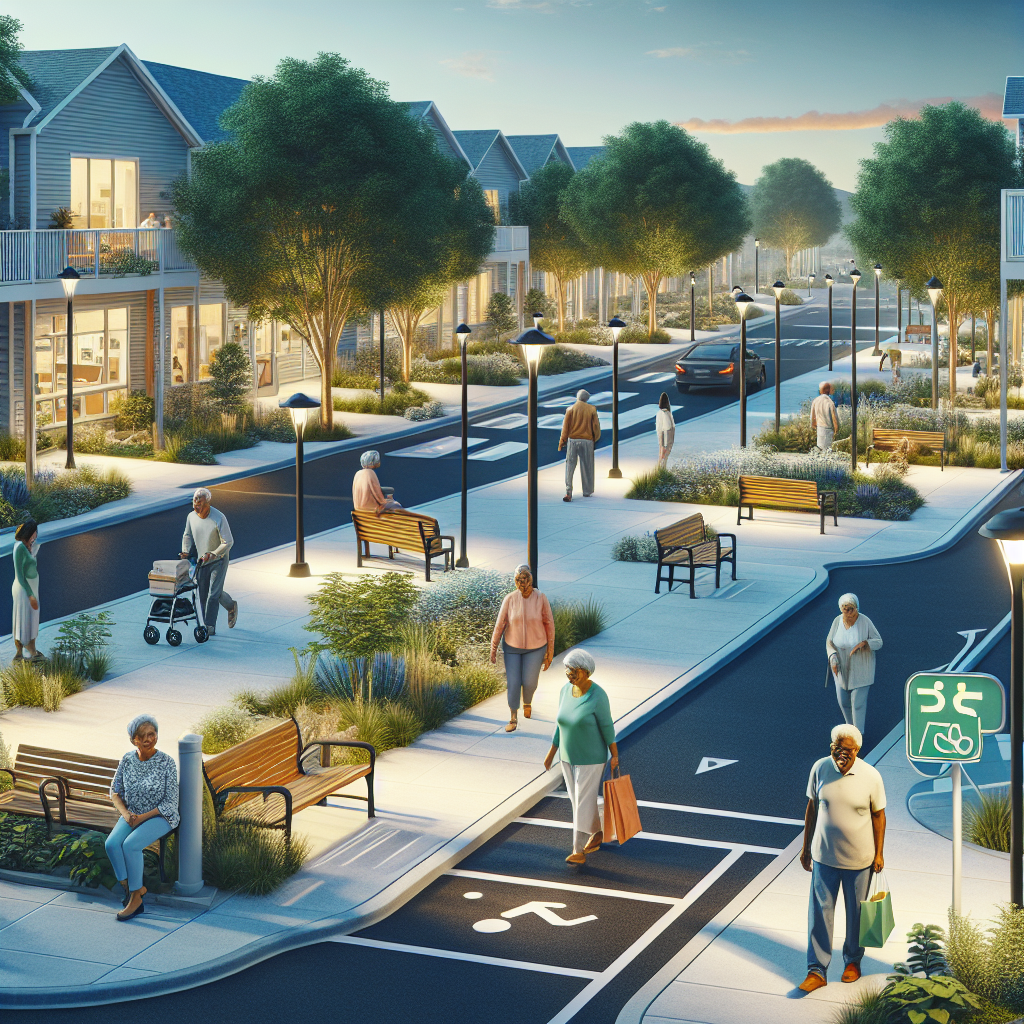AARP Emphasizes the Importance of Walkable Communities for Aging in Place
As the population ages, the concept of “aging in place” has gained significant traction. This idea revolves around enabling older adults to live independently in their own homes and communities for as long as possible. AARP, a leading organization advocating for the well-being of older Americans, has highlighted the critical role that walkable communities play in facilitating this goal. By promoting environments that are safe, accessible, and conducive to walking, AARP aims to enhance the quality of life for seniors and support their desire to age in place.
The Concept of Walkable Communities
Walkable communities are designed to prioritize pedestrian access and safety, making it easier for residents to navigate their surroundings without relying on cars. These communities typically feature:
- Sidewalks and pedestrian pathways
- Safe crosswalks and traffic calming measures
- Proximity to essential services such as grocery stores, healthcare facilities, and public transportation
- Parks and recreational areas
- Mixed-use developments that combine residential, commercial, and recreational spaces
By incorporating these elements, walkable communities not only promote physical activity but also foster social interaction and community engagement, which are vital for the well-being of older adults.
Benefits of Walkable Communities for Seniors
Walkable communities offer numerous benefits for seniors, including:
- Improved Health: Regular walking can help prevent chronic diseases, improve cardiovascular health, and enhance mental well-being.
- Increased Independence: With essential services within walking distance, seniors can maintain their independence and reduce reliance on others for transportation.
- Enhanced Safety: Well-designed pedestrian infrastructure reduces the risk of accidents and injuries.
- Social Connectivity: Walkable environments encourage social interactions, reducing feelings of isolation and loneliness.
These benefits align with AARP’s mission to empower older adults to live their best lives, making walkable communities a key focus of their advocacy efforts.
Case Studies: Successful Walkable Communities
Several communities across the United States have successfully implemented walkable designs, serving as models for others to follow. For instance, Portland, Oregon, is renowned for its extensive network of pedestrian-friendly streets and public transportation options. The city has invested in infrastructure that prioritizes walking and cycling, resulting in a vibrant, accessible environment for residents of all ages.
Another example is Arlington, Virginia, which has transformed its urban landscape to support walkability. The county’s “Complete Streets” policy ensures that all road users, including pedestrians, cyclists, and motorists, are considered in transportation planning. This approach has led to safer streets and increased pedestrian activity, benefiting the community’s older population.
Statistics Supporting Walkable Communities
Research underscores the importance of walkable communities for aging in place. According to a study by the National Association of Realtors, 60% of Americans prefer neighborhoods with a mix of houses, shops, and businesses that are easily walkable. Furthermore, a report by the Urban Land Institute found that walkable urban places have higher property values and attract more investment, indicating their economic viability.
For seniors, the benefits are even more pronounced. A study published in the Journal of Aging and Health found that older adults living in walkable neighborhoods had a 41% lower risk of developing mobility disabilities compared to those in less walkable areas.
Conclusion: A Path Forward
AARP’s emphasis on walkable communities highlights the organization’s commitment to supporting aging in place. By advocating for environments that prioritize pedestrian access and safety, AARP aims to enhance the quality of life for older adults, promoting health, independence, and social connectivity. As more communities recognize the value of walkability, the potential for creating inclusive, age-friendly environments grows, offering seniors the opportunity to thrive in their own homes and neighborhoods.
In conclusion, walkable communities represent a vital component of successful aging in place strategies. By investing in pedestrian-friendly infrastructure and policies, we can create environments that support the well-being and independence of older adults, ensuring they can enjoy their golden years with dignity and vitality.



